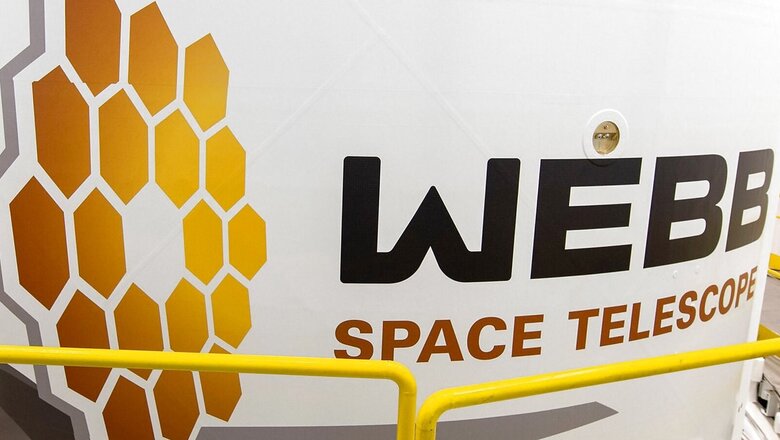
views
NASA is going to start its new mission with the help of its James Webb Telescope that will reach space in around five months from now. It is the largest and the most powerful telescope to be launched in space. The James Webb Telescope was deployed into space using the Ariane 5 launch vehicle, which took off on December 25 last year.
The space research organisation is using the telescope to explore the universe with the main purpose to see if life exists on any other planet or star.
Also Read: War in Ukraine: Chip Companies Predict Limited Supply Chain Disruption as Russia Invades Ukraine
The telescope is specifically going to observe a special planetary system or a star named TRAPPIST-1 which first made the headlines five years back. This system is said to be the home to seven planets that mimic Earth’s dimensions.
“What kinds of planets could host alien life? The James Webb Space Telescope will help tackle this question by looking at TRAPPIST-1, a system of seven rocky planets orbiting a faint star," NASA mentioned when it first discovered the system using other telescopes in its armoury.
Also Read: Amazon Echo Buds (2nd-Gen) With Active Noise Cancellation, 15-Hour Battery Launched in India: Price, Specs
TRAPPIST-1 is placed at a distance of 235 trillion miles from Earth, and NASA seems to believe that all of these planets could potentially have water on their surface, which directly suggests the existence of living beings of some nature. NASA will be relying on the James Webb Telescope to verify its observations by looking for any sign of life in the atmosphere of these planets.
In fact, NASA seems to have targeted the fourth planet from the TRAPPIST-1 system called TRAPPIST-1e which according to the organisation sits in the sweet spot of what scientists call the habitable zone. It says the fourth planet in this system gets an adequate amount of heat from the main star (like our Sun), which helps in formation of liquid water on the surface.
More details are likely to be shared by NASA once the telescope gets to work, which is going to commence before August this year.
Watch Video: Vivo V23 5G Review: For The Selfie Lovers
And we are hoping the mission provides us with vital information that could help science exploration reach new levels in the future.
Read all the Latest Tech News and Breaking News here














Comments
0 comment